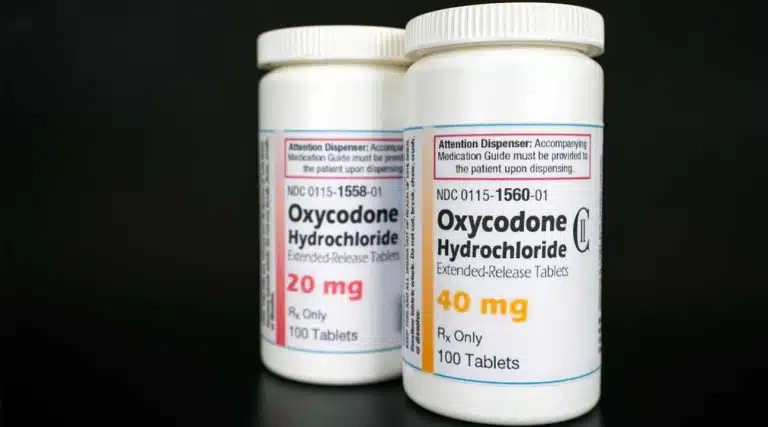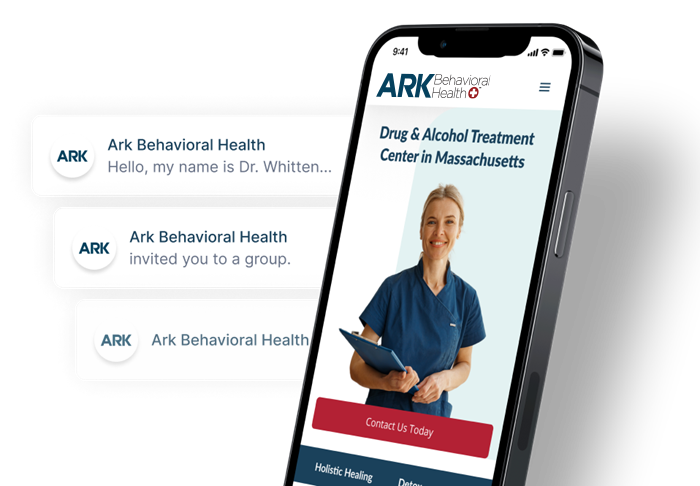Oxycodone Abuse & Addiction | Side Effects, Withdrawal Symptoms, & Treatment Options
- What Is Oxycodone/Oxycontin?
- Side Effects Of Oxycodone
- Signs Of Oxycodone Overdose
- Oxycodone Withdrawal
- Oxycodone Addiction Treatment
- Oxycodone FAQ

The abuse of oxycodone for non-medical reasons is a growing concern. This prescription drug is potentially addictive and can cause complications to mental health and physical well-being when it’s abused or misused.
Although opioid abuse is a concern, professional addiction treatment offers a solution to help with long-term recovery goals.
What Is Oxycodone?
Oxycodone is an opioid prescription pain relief medication. This pain reliever may be prescribed to an individual who experiences moderate to severe pain from a legitimate medical situation.
Popular oxycodone brand names, including combination products, are:
- Oxycontin—Learn more about Oxycontin Addiction
- Roxicodone
- Percocet (acetaminophen and oxycodone)—Learn more about Percocet Addiction
- Percodan (aspirin and oxycodone)
Unfortunately, the medication is addictive and opioid abuse is possible.
Oxycodone Abuse
The National Institutes on Health states that Oxycontin is as addictive as morphine, a powerful opiate. Oxycodone is a central nervous system depressant that binds to opioid receptors in the brain, blocking pain signals and releasing a pleasure chemical called dopamine.
This chemical process reinforces using the drug, and prescribed oxycodone use can turn into abuse when:
- you take a higher dose of the prescription painkiller than directed
- you take it without a prescription
- you take it to achieve an oxycodone high
Opioid abuse is likely to occur if you crush the medication and start snorting it, or dissolve the pill in liquid and inject the substance into a vein with an intravenous needle.
Risks Associated With Oxycodone Use
Drug addiction is not always due to the recreational use of prescribed medications. In some situations, you may develop a tolerance or dependence when using the medication as prescribed and for a short period of time.
Common risks associated with oxycodone use include:
- tolerance and physical dependence, which may lead to addiction or opioid use disorder
- overdose, even when using “oxy” for legitimate medical reasons
- increased sensitivity to pain, which may result in taking more than prescribed
- depression or other mental health issues, particularly when using it over an extended period of time
Using oxycodone for legitimate medical reasons requires appropriate supervision and discussions with a medical professional. Since the medication has a high-risk of addiction, it’s important to take measures to limit the risks.
Side Effects Of Oxycodone Addiction
The first step in recovery from oxycodone abuse is identifying the side effects and symptoms of addiction.
Common signs that you or a loved one is struggling with oxycodone addiction include:
- confusion
- drowsiness or poor coordination
- increased rate of pain sensitivity
- dry mouth
- increasing the dosage or using more than prescribed for a medical condition
- constipation
- slowed breathing
- changes to mood or sudden mood swings
- changes to sleep habits
- requesting early refills on Oxycontin; seeking prescriptions from multiple doctors
If you suspect a loved one may be abusing a prescription opioid, then it’s important to seek treatment. Misusing opioids can lead to overdose and serious health complications.
Signs Of Oxycodone Overdose
Oxycodone overdose deaths may occur when someone takes too much of the medication or mixes it with other substances like alcohol.
Overdose can occur by accident when oxycodone doses exceed an appropriate amount for you or when you decide to increase the dosage of the medication for any reason.
Opioid-related overdose deaths are common in the United States, but preventable.
Common signs of opioid overdose include:
- a weak pulse
- low blood pressure
- unresponsive to surroundings, noises, or others
- vomiting
- difficulty breathing or shallow breathing (respiratory depression)
- no longer breathing
- seizures
- blue lips or fingernails
If you suspect that a loved one has overdosed on oxycodone, seek immediate medical attention.
Oxycodone Withdrawal Symptoms & Detox
Whether it’s oxycodone, hydrocodone, or codeine, opioid withdrawal symptoms and the process of detoxing from prescription medications have similarities.
Opioids have specific withdrawal symptoms that may occur when you stop use. This can complicate the recovery process without a treatment program that includes detox support and supervision.
Withdrawal symptoms from oxycodone and other opioids may include:
- anxiety
- insomnia
- agitation
- sweating
- yawning
- muscle aches
- nausea or vomiting
- cramps in the abdominal muscles
In most cases, withdrawal symptoms are not life-threatening; however, they may be uncomfortable and lead to further substance abuse.
Oxycodone Addiction Treatment Options
Treating oxycodone addiction allows you or a loved one to move forward with a healthy lifestyle. Addiction treatment programs take personal concerns and factors into account to develop a customized plan of action for long-term goals.
For example, if you notice that a loved one uses oxycodone and alcohol, a treatment plan may take alcohol use into account as part of the recovery process.
Treatments that may help with addiction recovery from oxycodone include:
- medication-assisted treatment (MAT), which uses medications like methadone or buprenorphine to lower cravings and dependence
- behavioral therapy, which may be combined with MAT to change thinking and attitudes about drug use
- group therapy or family counseling for increased support during treatment
- inpatient treatment, or living in a rehab facility with 24/7 care and support
- outpatient treatment, which allows you to live at home and travel daily or weekly for scheduled treatment sessions
When you’re concerned about a loved one’s behavior or your own dependence on oxycodone, it may be time to seek professional help.
To learn more about our opioid treatment programs and other recovery services, please contact Ark Behavioral Health today.
Oxycodone FAQ
Is Oxycodone An Opiate or Opioid?
Opiates refer to substances that naturally occur from the poppy plant. Although oxycodone has naturally occurring properties, it is still produced in a lab. This means that oxycodone is considered a semi-synthetic opioid.
Read Is Oxycodone An Opiate or Opioid? to learn more
Can You Snort Oxycodone?
Yes, some people abuse oxycodone by crushing the tablets into a fine powder and then snorting it. This form of abuse makes the user feel high very quickly and poses serious health risks.
Some health risks include nose bleeds, loss of smell, seizures, sinus infections, lung infections, breathing problems, and life-threatening overdose.
Learn more about Snorting Oxycodone
Can You Inject Oxycodone?
Opioid painkillers, like oxycodone, are sometimes injected directly into the body in urgent hospital or emergency cases. It’s also possible for individuals to shoot-up oxycodone in a non-medical setting, liquefying the medication and injecting it directly into the bloodstream.
While shooting up does provide a faster and more intense high, oxycodone pills are designed with anti-tamper formulations to make this process as difficult as possible.
Additionally, shooting up can lead to devastating health effects like addiction, overdose, limb amputation, and death.
Learn more about Injecting Oxycodone (IV Use)
How Long Does Oxycodone Stay In Your System?
When the body breaks down an opioid painkiller like oxycodone, it leaves metabolites that can be detected by drug tests long after the effect of the painkiller has worn off.
Oxycodone is detectable in the blood for up to a day, in saliva for up to two days, in urine for up to four days, and in hair follicles for up to 90 days.
Read How Long Does Oxycodone Stay In Your System? to learn more
Can You Smoke Oxycodone?
It’s possible to smoke oxycodone. However, smoking oxycodone is a form of opioid abuse that can cause a number of health effects, including overdose and lung problems.
Learn more about Smoking Oxycodone
Can You Spot Fake Oxycodone?
According to the United States Drug Enforcement Administration (DEA), there are a number of ways you can spot a fake oxycodone.
The writing and numbers on the fake oxycodone pills may be more defined. If the pills are being sold online, that may indicate that the oxycodone is counterfeit.
Learn more about Fake Oxycodone & Counterfeit Pills
Can You Take Oxycodone While Breastfeeding?
No, taking oxycodone while breastfeeding can be dangerous to your nursing infant. Oxycodone may be transferred from a breastfeeding woman to an infant, resulting in life-threatening adverse effects for the newborn.
Learn more about Taking Oxycodone While Breastfeeding
How Much Does Oxycodone Cost?
The average oxycodone street price falls around $20 per pill, with stronger formulations and brand names like OxyContin and Percocet commanding higher prices than generic formulations.
Counterfeit oxycodone pills which contain fentanyl are also becoming increasingly common.
Learn more about How Much Oxycodone Costs
What Drug Schedule Is Oxycodone?
Oxycodone (brand name Oxycontin) is a Schedule II controlled substance, meaning it has a high potential for abuse.
Learn more about Oxycodone Drug Schedule
Should You Take Expired Oxycodone?
You should follow the guidelines of the expiration date for your oxycodone prescription. However, this drug maintains potency even years later. The medication should be stored at room temperature in a safe environment to ensure effectiveness.
Learn more about Expired Oxycodone
What Does Oxycodone Look Like?
Oxycodone may look like a small pill or tablet with a white, off-white, yellow, or blue color. Illegal forms of oxycodone may take on this appearance, but may actually contain fentanyl, a strong synthetic opioid.
Learn more about What Oxycodone Looks Like
What’s A Typical Dose Of Oxycodone?
A typical dose of oxycodone is likely to start between 5 and 15 mg every 4-6 hours.
What Drugs Shouldn’t Be Taken With Oxycodone?
There are quite a few drugs that shouldn’t be taken with oxycodone, including benzodiazepines, other opioids, alcohol, marijuana, and muscle relaxants.
Is Oxycodone A Narcotic?
Yes, oxycodone is a narcotic (another name for an opioid). It’s also a CNS depressant and a Schedule II controlled substance.
Written by Ark Behavioral Health Editorial Team
©2024 Ark National Holdings, LLC. | All Rights Reserved.
This page does not provide medical advice.
Centers for Disease Control and Prevention (CDC) - Opioid Overdose
MayoClinic - Prescription Drug Abuse
MayoClinic - How Opioid Addiction Occurs
MedlinePlus - Oxycodone
MedlinePlus - Opiate and Opioid Withdrawal
National Institute on Drug Abuse - Prescription Opioids DrugFacts
National Institutes on Health - The Addiction Potential of Oxycodone


Questions About Treatment?
Ark Behavioral Health offers 100% confidential substance abuse assessment and treatment placement tailored to your individual needs. Achieve long-term recovery.
100% confidential. We respect your privacy.
Prefer Texting?
Our friendly support team is here to chat 24/7. Opt out any time.







 Learn More
Learn More








